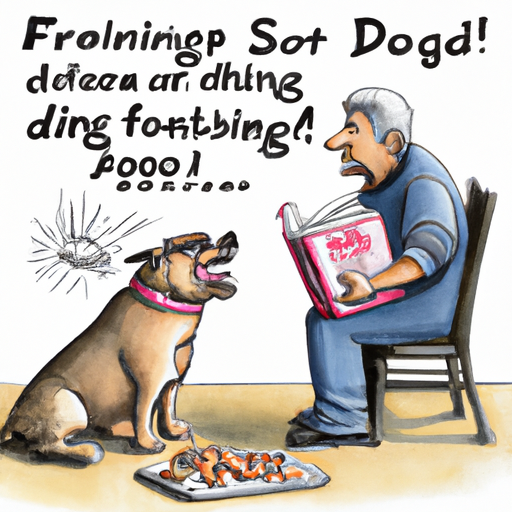As a caregiver, you’re likely very familiar with the joys and challenges that come with taking care of a pet. One such challenge you may encounter is food aggression in dogs. This is a serious behavior issue that requires your immediate attention.
Understanding Food Aggression
Food aggression is a form of resource guarding where a dog becomes overly protective of their food. They may growl, snap or even bite if they feel threatened while eating. This behavior can be triggered by various factors, including past trauma, competition with other pets, or instinct.
- Past Trauma: Dogs that have had to compete for food in the past, such as strays or rescue dogs, may develop food aggression.
- Competition: Dogs living with other pets may feel the need to protect their food.
- Instinct: Some dogs may display food aggression due to their natural instinct to guard their resources.
Recognizing the Signs of Food Aggression
Food aggression can manifest in various ways. It’s crucial to identify the signs early to prevent any potential harm. These signs include:
- Growling or snarling when approached
- Eating faster when there are people or other pets around
- Guarding the food bowl or space around it
Techniques to Manage Food Aggression
Here, we’ll explore some techniques you can adopt to manage and hopefully eliminate food aggression in your dog.
Positive Reinforcement
Positive reinforcement can be used to change your dog’s behavior. This technique involves rewarding your dog for positive behavior, which encourages them to repeat it.
- Feed your dog by hand: This helps them associate your presence with food, reducing their need to guard it.
- Gradually introduce challenges: Once your dog is comfortable eating from your hand, start adding minor challenges like reaching towards their food while they eat. Reward them for not reacting aggressively.
Desensitization Training
Desensitization training can be beneficial in managing food aggression. This technique involves gradually exposing your dog to the trigger (your presence during meals) in a controlled manner, reducing their negative reaction over time.
- Start by standing a few feet away from your dog while they eat, then gradually decrease the distance over several weeks.
- Always maintain a non-threatening posture and offer treats or praise for non-aggressive behavior.
Seek Professional Help
If your dog’s food aggression is severe or if they pose a danger to you or others, it’s wise to seek professional help.
| Type of Professional | How They Can Help |
|---|---|
| Dog Trainer | Can provide training to modify your dog’s behavior. |
| Animal Behaviorist | Can offer a deeper understanding of why your dog is behaving aggressively. |
| Veterinarian | Can rule out any medical issues that may be causing the aggression. |
Preventing Food Aggression in Puppies
Prevention is always better than cure. Here are some steps you can take to prevent food aggression from developing in your puppy:
- Feed them in a quiet, non-threatening environment.
- Teach them commands like “leave it” or “drop it” early on.
- Regularly handle their food and bowl to help them get used to it.
FAQs
Q: Can food aggression be cured?
A: With consistent training and patience, food aggression can often be managed or even eliminated.
Q: Is food aggression a sign of dominance?
A: Not necessarily. It’s more accurately a sign of fear or anxiety.
Q: Can I punish my dog for showing food aggression?
A: Punishment can often make the situation worse. It’s better to use positive reinforcement techniques.
Remember, it’s important to approach this issue with patience and understanding. With the right strategies and support, you can help your furry friend overcome their food aggression.



